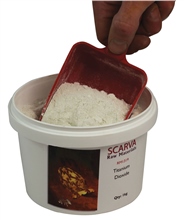shelly
from
United Kingdom
asks
is this able to be painted on, and dinnerware safe?
|
Scarva Replies:
|
This is an oxide. It is supplied in powder form. An oxide would normally be added to a glaze, slip or clay body to colour it. It may also be mixed with water and applied onto ware then sponged back this would normally be for sculptural/decorative work. This technique would not be dinnerware safe.
|
Lou
from
United Kingdom
asks
Do you just add water to the oxide powder to decorate greenware, or does it need frit mixed in with it too?
|
Scarva Replies:
|
Just add water to create an oxide wash.
|
Sophie
from
United Kingdom
asks
If added to a clay body, will it be food safe once fired and glazed?
If so, in which quantity yo you suggest to mix it in white clay to get a rich deep blue: 5%? 10%?
|
Scarva Replies:
|
Here is a link that may help you:
https://www.scarva.com/en/Is-This-Glaze-Food-Safe/cc-40.aspx
|
Joe
from
United Kingdom
asks
Do you know where your cobalt is sourced. Is it ethically mined? Thank you.
|
Scarva Replies:
|
Hi, this cobalt is sourced in The Congo, all our materials are ethically mined and have conflict mineraly compliance. Hope this helps!
|




























